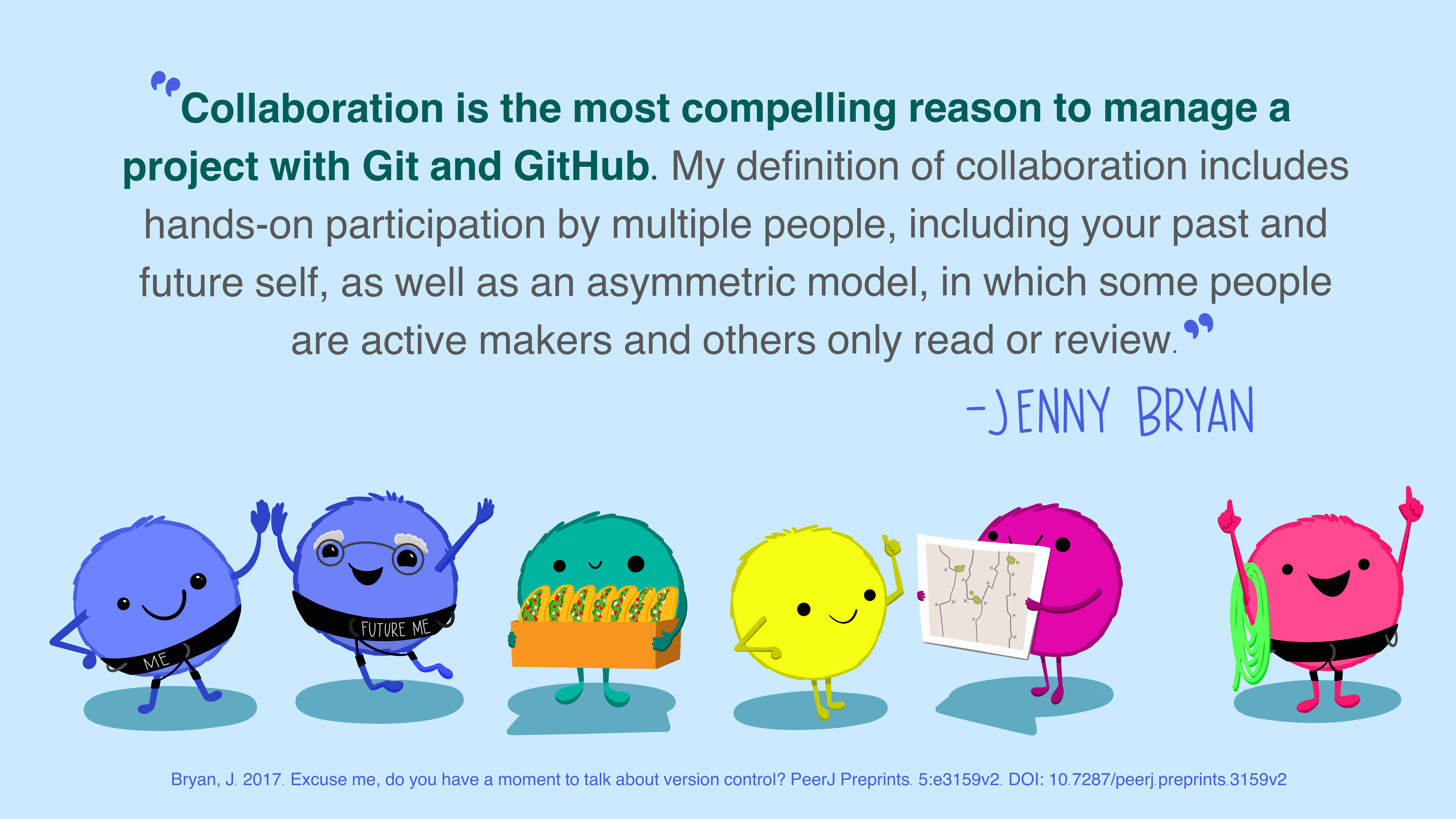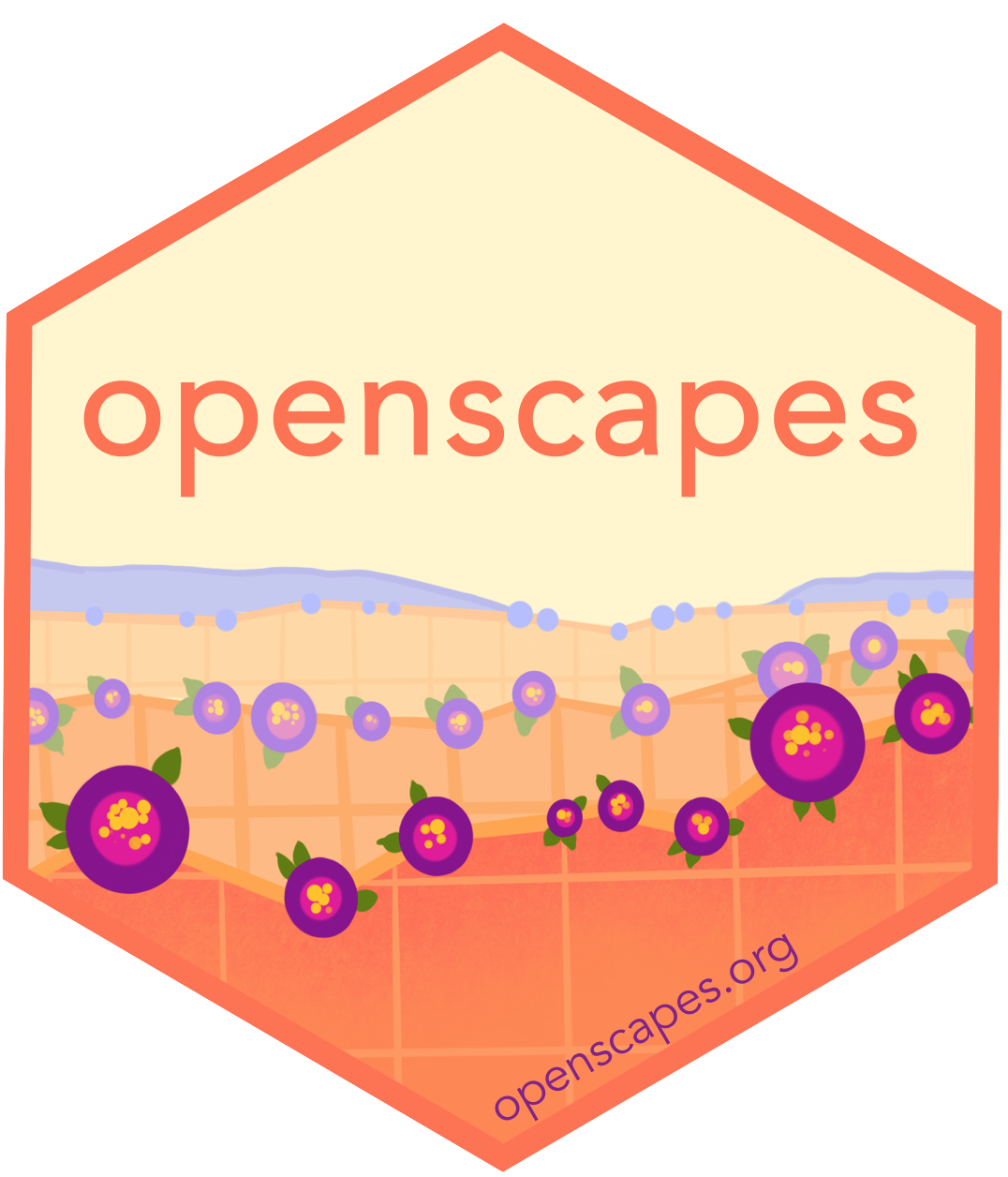GitHub strategies
What is GitHub1, and what are GitHub strategies for Future Us?
GitHub is a powerful tool for collaborative coding with version control, but we are going to focus on some of its lesser-celebrated awesomeness. We’ll talk about GitHub for publication and project management. We will focus on how to use GitHub for collaboration and communication for science, and spend time with hands-on practice.
We begin with a friendly general introduction to GitHub and share examples and strategies used by some research groups. Following this are the two parts of the GitHub Clinic as we teach them in Champions Cohorts: 1) GitHub for publishing and 2) GitHub for project management.
GitHub Clinic
The Openscapes GitHub Clinic introduces GitHub with the motivation of collaboration and open science. It is designed for both new and seasoned learners, focused on how to develop workflows with diverse teams.
Prerequisite: To follow along with the Clinic, you will need to create GitHub account at http://github.com, if you don’t already have one. Optional advice from Jenny Bryan about choosing a username.
GitHub for supporting, reusing, contributing, and failing safely
When we talk about managing projects to help us contribute, reuse, collaborate, and fail safely, we are talking about GitHub. We mean using modern collaborative software designed to organize otherwise unwieldy interrelated files and to track changes by potentially different people through time – something that is for everyone, whether or not we identify as “coders”. People do use GitHub for code- and data-intensive projects, but we are not limited to that use. GitHub is a powerful approach for any project that we want to organize and communicate about; it’s a way we can be open with ourselves and our teams, and also work more publicly as we feel comfortable.

See the GitHub Illustrated Series (Horst & Lowndes 2022) for the full story!
Growth Mindset
When we teach GitHub, we find it’s useful to say explicitly that we should go in with a Growth Mindset - the idea that we don’t know something yet but we are able to learn. Growth Mindset is work by Dr. Carol Dweck - see her book, TED Talk (10 min); illustrated video (2 min).
As part of this, we like how Jenny Bryan (Code Smells and Feels) thinks about this - that your taste develops faster than your abilities.
FAQs: GitHub for research groups
As you get a better hands-on sense of GitHub’s capabilities, you’ll be thinking about how to get organized and use this for your own research group.
This section was created based on Frequently Asked Questions (FAQs) that Champions teams had during the GitHub Clinic. Read on to the next section for an introduction to GitHub via the GitHub Clinic.
What are example Organizations?
Here are examples of GitHub Organizations created as part of Openscapes Champions Cohorts where the content is now developed and maintained to support a broader range of researchers.
- NASA Openscapes https://github.com/NASA-Openscapes
- NMFS Openscapes for NOAA Fisheries https://github.com/nmfs-openscapes
- California Water Board https://github.com/CAWaterBoardDataCenter
Many Champions teams create GitHub Organizations for their research group. This is a way for all the work that happens in the research group to be organized in one place, but also clearly attributed and credited by each user who contributes.
You can explore other Champions teams’ GitHub organizations they’ve created. They’re listed under the Cohorts in which they participated:
- Gavin Fay Lab https://github.com/thefaylab
- NWFSC Fisheries Engineering and Acoustic Technologies (FEAT) team https://github.com/NOAA-FEAT
- NWFSC Protected Salmonids Team https://github.com/nwfsc-math-bio
- AFSC GAP Survey Data Products https://github.com/afsc-gap-products
CS&S Cohort blog post; Cohort repo
- Kenai Watershed Forum https://github.com/Kenai-Watershed-Forum
- WildCo Lab https://github.com/WildCoLab
CSU-COAST Cohort blog post; Cohort repo
- Logan Lab https://github.com/loganlabcsumb
- Ecological Oceanography Lab at CSUN https://github.com/ecoocelab-csun
- Claisse Lab @ Cal Poly Pomona https://github.com/ClaisseLab
- Coastal Ecosystems Lab https://github.com/coastal-ecosystems-lab
Size of repositories?
Restated: How do we decide when we need a new repository? Should this be one repo per project or an organization-level repo?
Repositories live inside an Organization. “Repos” are essentially folders, and you’ll put files and folders in them. While there are many different approaches that could make sense for your group, our starting recommendation would be that any project happening in the research group gets its own repository, and that repository is in the research group’s Organization. This is then clearly part of the research group’s work and more findable by past/current/future members. And it can be forked/moved to other accounts at any time.
How much should I write in a single Issue?
Issues and Projects are a great way to keep organized. See a few examples in the NOAA Fisheries Resource Book and Openscapes How We Work issues and Planning project.
The “size” of each Issue is something you’ll get a feel for as you use them more, so don’t worry too much about it as you get started. The most common “size” of Issue is something you can complete, and close. This might include smaller checklists and conversations, but it is more along the lines of “change axes labels in my plot” rather than “write thesis chapter”.
Some Issues are also used more as reference and shared resources, and might not be closed so they’re easier to discover. Depending on your workflow and norms you establish with your group, it might be best to keep those reference issues in a different repository so you don’t have lingering open issues in a repo that you like to close issues and move on.
When you’re logged into GitHub, go to https://github.com/issues to see all of the Issues assigned/created/etc for your account!
How I use Branches & Forks?
Branches are a really powerful feature for software development, but aren’t necessarily the right place for new GitHub users to get started. If there are a small number of people in a single repository and you’re all first learning, we’d suggest that you start using GitHub without branches, and focus on checking in with each other as you contribute (see R for Excel Users example collaborating with GitHub from RStudio).
For the first 8 years as a GitHub user, I only worked in the Main branch with my small group of Ocean Health Index colleagues. It was only when working with the NASA Openscapes Mentors community that I learned how to use branches as software developers do. - Julie Lowndes
Branches are powerful as your teams grow and/or as you become savvier with GitHub and code, so it is good to discuss strategies with them.
One common approach is to treat each branch as very temporary: you make a branch from main, add your contribution, make a pull request, merge and delete the branch. This is the approach with the NASA Mentors and it’s more continuous little updates rather than larger big updates, so we can make progress together more quickly. This also works better when working with Jupyter Notebooks, which can cause merge conflicts.
Should we do everything in a dev branch?
Full question: “Right now any collaborative code in my group has a main branch and a dev branch. All collaborators clone the dev branch and push back to the dev branch on GitHub before anything ever goes to main. Is this best practice?”
Advice: This system with the dev branch works so long as the dev doesn’t diverge too far from the main branch - the Ocean Health Index project does it that way but it’s someone’s job for a few weeks at the end of each year making sure the dev branch can merge into main.
One of the lessons here is to make these tools work for you, and add new layers as you and your team build up your skills.
Footnotes
From Bryan 2017: “we’re targeting GitHub - not Bitbucket or GitLab - for the sake of specificity. However, all the big-picture principles and even some mechanics will carry over to these alternative hosting platforms. We are advocating for the use of hosted version control as a general concept, with GitHub being the best and most common provider today.”↩︎
